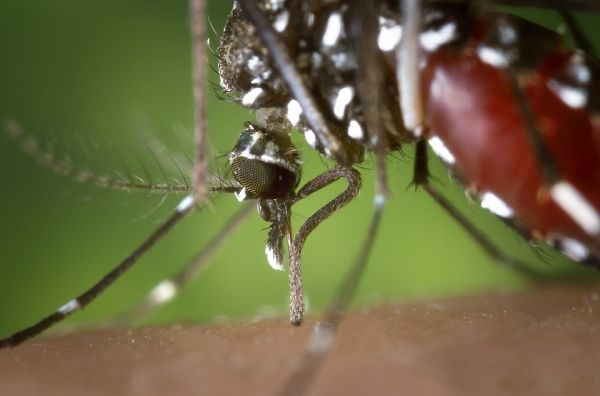Since December 2016, Brazil has been grappling with its worst yellow fever outbreak for several decades. To date, there have been 2,043 human cases including 676 fatalities, mainly occurring in ten Brazilian states including Rio de Janeiro and São Paulo. These two states, the most heavily populated in Brazil, had been free of yellow fever for nearly 70 years. Research by scientists at the Institut Pasteur and the Institut Oswaldo Cruz has demonstrated that the yellow fever virus can be transmitted via Aedes albopictus, the tiger mosquito. This opportunistic species is capable of colonizing both urban and forest areas.
Yellow fever virus (YFV) is an arbovirus of the Flavivirus genus and the Flaviviridae family. There are seven genotypes: five occur in Africa and two in South America. The South American forms of YFV are derived from the West African genotype. Since it was introduced into America through the slave trade, yellow fever has given rise to several deadly outbreaks associated exclusively with the Aedes aegypti vector. The Pan-American program for the eradication of this mosquito, launched in 1916, led to the elimination of urban yellow fever in 1954. Yellow fever now only persists in the Amazon rainforest, circulating among non-human primates as vertebrate hosts, with zoophilic mosquitoes as vectors. After the Ae. aegypti prevention campaigns were stopped, the species reappeared in cities in 1967. The tiger mosquito, Aedes albopictus, also emerged in Brazil in 1986. This opportunistic species is capable of colonizing a wide variety of habitats ranging from urban areas to forests, meaning that it can serve as a link between the forest cycle and a possible urban cycle of yellow fever.
Despite the availability of an effective vaccine, yellow fever remains a major public health problem in South America, where vaccination is not always compulsory. Every year, around 200,000 cases and 30,000 deaths are recorded worldwide (source WHO). The paper published in Scientific Reports describes a laboratory study that aimed to adapt YFV to the Ae. albopictus mosquito.
Read more at Institut Pasteur
Photo Credit: FotoshopTofs via Pixabay


